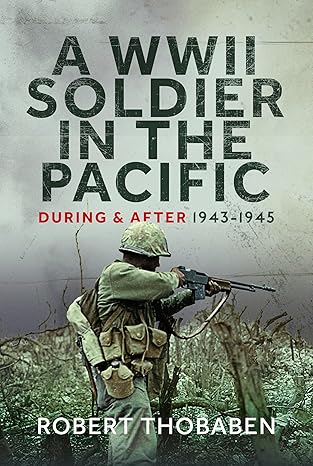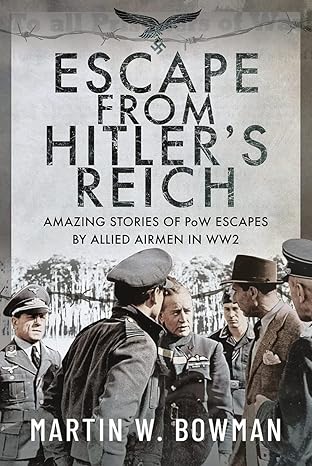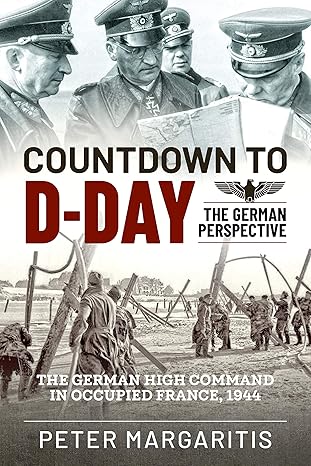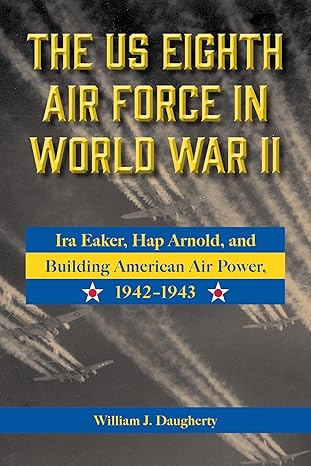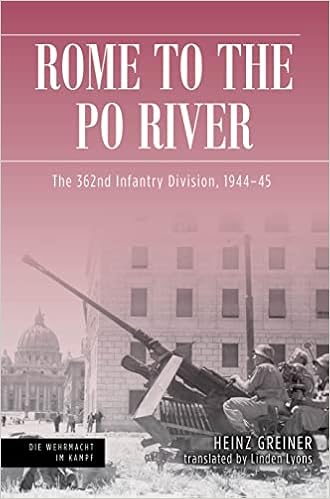The U.S. Army in Czechoslovakia 1945: An Operational Overview
By Bryan J. Dickerson
From April to December of 1945, the Third U.S. Army conducted operations in and around the western region of Czechoslovakia. Altogether, three of its corps (XII, V and XXII) and nine infantry and four armored divisions and two cavalry groups participated in these operations.
The Czechoslovak operations fell into three distinct phases: Border Operations, Liberation and Occupation. The Border Operations Phase occurred from 15 April until 5 May. During this time, the 90th and 97th Infantry Division and 2nd Cavalry Group screened the Czechoslovak border and conducted several limited offensive operations across the border to protect Third U.S. Army’s left flank as Third Army drove south-eastward into rumored Alpine Festung (National Redoubt) area of southern Germany / western Austria.
During the Liberation Phase (5-8 May 1945), V Corps and XII Corps conducted a major offensive to liberate western Czechoslovakia from Nazi German occupation. The 1st, 2nd, 5th, 26th, 90th and 97th Infantry Divisions, 4th, 9th and 16th Armored Divisions and the 2nd and 102nd Cavalry Groups all participated in liberating over 3,400 square miles of Czechoslovakia. Their irresistible drive was only halted by the orders of Supreme Allied Commander General Dwight D. Eisenhower approximately on the line Karlovy Vary – Plzen – Ceske Budejovice. Having been oppressed by the Nazis for six long years, Czechs in small villages, towns and the large city of Plzen greeted their liberators with exuberant public celebrations. The phase ended with the German High Command surrender and the termination of all hostilities.
The Occupation Phase was the longest of the three phases, lasing from 8 May until early December 1945. During this time, Third U.S. Army units stayed in western Czechoslovakia to assist the Czechs with rebuilding their war-damaged country, re-establishing government and government services, and maintaining order. The Americans also processed the hundreds of thousands of German soldiers and civilians who surrendered in the closing days of the war. The occupation period was the responsibility of first V Corps and then XXII Corps. Most U.S. units left Czechoslovakia by the end of May. U.S. divisions that served in Czechoslovakia on occupation duties at various times were the 2nd, 79th, 80th, and 94th Infantry Divisions, 8th and 16th Armored Divisions and the 102nd Cavalry Group. By mutual agreement with the Soviets, all U.S. and Soviet forces left Czechoslovakia in early December 1945.
Third U.S. Army Order of Battle for the Operations in Western Czechoslovakia
Third U.S. Army (General George S. Patton, Jr., Commanding)
Third U.S. Army consisted of three corps (III, XII and XX Corps) for the Border Operations Phase and four corps (III, V, XII and XX Corps) for the Liberation Phase. Only V and XII Corps served in Czechoslovakia. III and XX Corps operated in southern Germany and Austria. On 5 May, Third U.S. Army had 18 divisions and over 540,000 men, making it the largest field army ever fielded by the United States. “This is probably one of the most powerful armies ever assembled in the history of war..., ” wrote Patton’s Chief of Staff Major General Hobart Gay in his diary.[1]
XII Corps (Lt Gen S. LeRoy Irwin, Commanding) [2]
In addition to the Corps Headquarters, XII Corps consisted of the 5th, 26th, 90th, and 97th Infantry Divisions, the 4th and 11th Armored Divisions, the 2nd Cavalry Group and a number of field artillery battalions, combat engineers, logistical support, and medical units. The 97th Infantry Division was transferred to V Corps at the end of April. XII Corps served in and around Czechoslovakia from mid-April until the end of May 1945.
V Corps (Lt Gen Clarence Huebner, Commanding) [3]
In addition to the Corps Headquarters, V Corps consisted of the 1st, 2nd, and 97th Infantry Divisions, the 9th and 16th Armored Divisions, the 102nd Cavalry Group and a number of field artillery battalions, combat engineers, logistical support, and medical units. V Corps served in and around Czechoslovakia from early May until mid-June 1945.
XXII Corps (Lt Gen Ernest Harmon, Commanding) [4]
In addition to the Corps Headquarters, XXII Corps consisted of the 79th, 80th and 94th Infantry Divisions, the 8th and 16th Armored Divisions, the 102nd Cavalry Group and a number of field artillery battalions, combat engineers, logistical support, and medical units. XXII Corps relieved V Corps in mid-June 1945 and remained in Czechoslovakia until early December 1945.
Divisions and Cavalry Groups (In Order of Appearance) [5]
90th Infantry Division (Tough ‘ombres)
Major General Herbert Earnest, Commanding
The 90th Infantry Division was an Army Reserve division activated for World War Two. The division entered combat in Normandy in June 1944 and fought in the Normandy, Northern France, Ardennes and Central European campaigns. In the Normandy Campaign, the division helped close the Falaise Gap. In the fall of 1944, the division conducted very difficult assault crossings of the Moselle River and captured Fort de Koenigsmacker. In early April 1945, the 90th Infantry Division discovered the hundreds of bags of currency and the gold reserves of the Reichsbank hidden deep within a salt mine near Merkers, Germany. The total value was worth some $520 million at the time.
The 90th Infantry Division consisted of:
Division Headquarters / Headquarters Company
357th, 358th and 359th Infantry Regiments
90th Division Artillery: 343rd, 344th, 345th and 915th Field Artillery Battalions
773rd Tank Destroyer Battalion
90th Cavalry Reconnaissance Squadron [Mechanized]
325th Engineer Combat Battalion
315th Medical Battalion
790th Ordnance Light Maintenance Company
90th Quartermaster Company
90th Signal Company
Military Police Platoon
Division Band
The 90th Infantry Division was the first U.S. army unit to reach the 1937 German –Czechoslovak border. On 18 April 1945, a reconnaissance task force from 3rd Battalion / 358th Infantry Regiment crossed the border and became the first U.S. unit to enter Czechoslovakia. The 90th Infantry Division conducted screening operations along the border. On 23 April, the division liberated the German concentration camp at Floessenbuerg. On 4 May 1945, Major General Earnest accepted the surrender of most of the 11th Panzer Division at Vseruby, Czechoslovakia. Colonel Charles H. Reed, commander of 2nd Cavalry Group, assisted with arranging for the 11th Panzer’s surrender. On 5 May, a company from the 357th Infantry Regiment was ambushed at the town of Zhuri by German officer candidates. The Germans were using U.S. vehicles captured earlier from a platoon of 2nd Squadron / 2nd Cavalry Group. Though the Germans were routed, ten U.S. soldiers were killed and ten more were wounded. The 90th Infantry Division secured several key mountain passes and roads that the 4th Armored Division used in its attack of 6 May. The 90th Infantry Division followed behind the 4th Armored Division, consolidating its advances. The division left Czechoslovakia in mid-May 1945.
2nd Cavalry Reconnaissance Group [Mechanized] (Patton’s Ghosts) [6]
Colonel Charles H. Reed, Commanding
One of the oldest units in the U.S. Army, the 2nd Cavalry Group was formed as the 2nd Regiment of Dragoons in 1836 and was later re-designated as the 2nd Cavalry Regiment. In World War Two, the regiment was re-organized as mechanized cavalry and re-named the 2nd Cavalry Reconnaissance Group [Mechanized]. The 2nd Cavalry Group entered combat in Normandy in July 1944, fought fierce battles around Luneville during the Lorraine Campaign, and fought in the Battle of the Bulge.
The 2nd Cavalry Group consisted of:
Group Headquarters
2nd Cavalry Reconnaissance Squadron [Mechanized]
42nd Cavalry Reconnaissance Squadron [Mechanized]
After driving across central Germany, the 2nd Cavalry Group arrived at the 1937 Czechoslovak border shortly after the 90th Infantry Division. On 19-20 April, the 2nd Cavalry Group captured the border town of Asch just across the Czechoslovak border. A week later, the 2nd Cavalry Group successfully undertook two simultaneous missions to rescue Allied prisoners of war and the famed Lipizzaner performing horses from behind German lines. The Group’s commander, Colonel Charles Reed, helped arrange the surrender of the 11th Panzer Division to the U.S. 90th Infantry Division. After the war, the group guarded the 11th Panzer soldiers in camps in southern Germany. In early May, a platoon of 2nd Squadron was ambushed and captured by a much larger force of German soldiers from an Officer Candidate School. These German OCS soldiers ambushed U.S. soldiers from the 357th Infantry Regiment at Zhuri on 5 May. In the final days of the war, the 2nd Cavalry Group attacked into western Czechoslovakia and liberated numerous towns and villages south-east of Plzen, including the town of Klatovy. The 2nd Cavalry Group remained in Czechoslovakia only a few days after the war ended and then moved back into Germany to assume occupation duties there.
97th Infantry Division (Trident) [7]
Brigadier General Milton Halsey, Commanding
The 97th Infantry Division was an Army Reserve division activated for World War Two. Originally trained in amphibious warfare and scheduled to deploy to the Pacific Theater, the 97th Infantry Division instead was sent to the European Theater because of the Battle of the Bulge. The 97th Infantry Division entered combat in early April 1945 and helped reduce the German forces surrounded in the Ruhr Pocket of western Germany. Its commanding general was the brother of Fleet Admiral William Halsey, USN, famed commander of the U.S. Third Fleet in the Pacific.
The 97th Infantry Division consisted of:
Division Headquarters / Headquarters Company
303rd, 386th and 387th Infantry Regiments
97th Reconnaissance Troop (Mechanized)
322d Engineer Combat Battalion
322d Medical Battalion
97th Division Artillery: 303d, 386th, 389th and 922nd Field Artillery Battalions
797th Ordnance Light Maintenance Company
97th Quartermaster Company
97th Signal Company
Military Police Platoon
Division Band
782nd Tank Battalion
820th Tank Destroyer Battalion
444th Antiaircraft Artillery Automatic Weapons Battalion (Self-Propelled)
In mid-April, the 97th Infantry Division was rushed from the Ruhr to the Czechoslovak border to help protect Third U.S. Army’s lengthening eastern flank. After arriving on the border, the 97th Infantry Division assisted the 90th Infantry Division with caring for the freed inmates of the Floessenberg Concentration Camp. On 25-26 April, the 386th and 387th Infantry Regiments liberated the city of Cheb and captured its nearby airport. At the end of the month, the division was administratively transferred to V Corps of First U.S. Army but remained on the border. The 97th Infantry Division was transferred back to Third U.S. Army along with V Corps in the first days of May. On 5 May, the division attacked into Czechoslovakia and opened up routes for the 16th Armored Division to use in its attack on Plzen the following day. Elements of the 97th Infantry Division arrived in Plzen in the afternoon of 6 May and assisted with securing the liberated city. Pfc Domenic Mozzetta of Company B / 387th Infantry Regiment fired the last shot of World War Two in Europe outside Plzen on the night of 7 May 1945. Brigadier General Halsey accepted the surrender of German General Karl Weissenberg and his Wehrkreis (Military Area) XIII. The division remained in Czechoslovakia for only a few days following the end of the war before returning to Germany for occupation duties.
1st Infantry Division (The Big Red One) [8]
Major General Clift Andrus, Commanding
One of the few pre-war Regular Army divisions, the 1st Infantry Division fought in North Africa and Sicily. Along with the 29th Infantry Division, the 1st Infantry Division stormed ashore on Omaha Beach on D-Day. The division then fought in the Normandy, Northern France, Rhineland, Ardennes-Alsace and Central Europe campaigns. In October 1944, the 1st Infantry Division captured Aachen, the first German city captured by the western Allies. In mid-April 1945, the 1st Infantry Division participated in the capture of German forces in the Harz Mountains region of central Germany.
The 1st Infantry Division consisted of:
Division Headquarters / Headquarters Company
16th, 18th and 26th Infantry Regiments
1st Reconnaissance Troop (Mechanized)
1st Engineer Combat Battalion
1st Medical Battalion
1st Division Artillery: 5th, 7th, 32nd, and 33rd Field Artillery Battalions
In addition, 406th Field Artillery Group (76th, 186th , 200th, and 955th Field Artillery
Battalions and 17th Field Artillery Observation Battalion) was attached for the Czechoslovak operation
701st Ordnance Light Maintenance Company
1st Quartermaster Company
1st Signal Company
Military Police Platoon
Division Band
634th Tank Destroyer Battalion
103rd Antiaircraft Artillery Automatic Weapons Battalion (Self-Propelled)
At the end of April, the 1st Infantry Division was sent to the northwest part of Czechoslovak border to free up the 97th Infantry Division for employment further south. As part of V Corps’s attacks into Czechoslovakia, Combat Command A (CCA) of the 9th Armored Division was attached to the 1st Infantry Division for a drive east from the vicinity of Cheb with Karlovy Vary being the objective. The 1st Infantry Division began its attacks on 5 May and experienced some of the heaviest fighting of the liberation in the mountainous areas around Cheb. On 6 May, CCA 9th Armored Division attacked through the 1st Infantry Division’s forward positions. On the morning of 7 May, CCA and the 1st Division halted their advances per Eisenhower’s orders. After the war ended, the German XII Corps surrendered to the CCA 9th Armored / 1st Infantry Division. The 1st Infantry Division returned to Germany later in May.
26th Infantry Division (Yankee Division) [9]
Major General Willard S. Paul, Commanding
The 26th Infantry Division was a National Guard division activated in 1940. Its units were originally from New England, hence its nickname “Yankee.” The 26th Infantry Division entered combat in the Lorraine Campaign and was one of the first three Third U.S. Army divisions committed to counter-attacking the German Ardennes offensive. The 26th Infantry Division participated in the drive across Germany and drove deep into the National Redoubt area and into Austria in April 1945.
The 26th Infantry Division consisted of:
Division Headquarters / Headquarters Company
101st, 104th and 328th Infantry Regiments
26th Reconnaissance Troop (Mechanized)
101st Engineer Combat Battalion
114th Medical Battalion
26th Division Artillery: 101st, 102nd, 180th and 263rd Field Artillery Battalions
726th Ordnance Light Maintenance Company
26th Quartermaster Company
39th Signal Company
Military Police Platoon
Division Band
818th Tank Destroyer Battalion
390th Antiaircraft Artillery Automatic Weapons Battalion (Self-propelled)
778th Tank Battalion
As part of XII Corps’s drive into Czechoslovakia, most of the 26th Infantry Division attacked north-east into the country. Its 328th Regimental Combat Team was attached to the 11th Armored Division for that division’s advances in Austria and participated in the liberation of Gusen Concentration Camp. Elements of the Yankee Division crossed the Vltava River in southeastern Czechoslovakia before being halted. On 7 May 1945, the Yankee Division accepted the surrender of the remainder of the 11th Panzer Division which did not surrender to the 90th Infantry Division three days before. The 26th Infantry Division stayed in Czechoslovakia until the middle of June 1945, then moved into Austria to assume occupation duties there.
2nd Infantry Division (Indian Head) [10]
Major General Walter Robertson, Commanding
Another of the few pre-war Regular Army divisions, the 2nd Infantry Division came ashore at Omaha Beach on D-Plus-One and fought throughout the European Campaigns. The 2nd Infantry Division captured the port city of Brest in September. In December 1944, the division played a major role in holding the northern shoulder of the Bulge during the German Ardennes counter-offensive and preventing the Germans from expanding the Bulge any farther north. In April 1945, the division captured the city of Leipzig in eastern Germany.
The 2nd Infantry Division consisted of:
Division Headquarters / Headquarters Company
9th, 23rd and 38th Infantry Regiments
2nd Cavalry Reconnaissance Troop (Mechanized)
2nd Engineer Combat Battalion
2nd Medical Battalion
2nd Division Artillery: 12th, 15th, 37th and 38th Field Artillery Battalions
702nd Ordnance Light Maintenance Company
2nd Quartermaster Company
2nd Signal Company
Military Police Platoon
Division Band
612th Tank Destroyer Battalion
741st Tank Battalion
462nd Antiaircraft Artillery Automatic Weapons Battalion (Self-Propelled)
The 2nd Infantry Division had finished mopping up operations around Leipzig when it was notified to move south to the Czechoslovak border for V Corps’s offensive. The 2nd Infantry Division arrived on the border and relieved units of the 90th Infantry Division. On 5 May, the division launched its attacks into Czechoslovakia. On 6 May, the 2nd Infantry Division followed 16th Armored Division’s advance and elements of the division entered the city of Plzen in late afternoon. The following day, the 9th Infantry Regiment liberated the town of Rokycany east of Plzen and were halted there by the end of the war. In three days of advances, the 2nd Infantry Division liberated numerous Czech towns and villages, including Domazlice. The division remained in Plzen and its vicinity, assisting with reconstruction and processing surrendering German soldiers and civilians. The 2nd Infantry Division left Czechoslovakia in late June and returned to the United States later that summer.
5th Infantry Division (Red Diamond) [11]
Major General Albert E. Brown, Commanding
The 5th Infantry Division was another of the pre-war Regular Army divisions that served in the European Theater. The division first served in Iceland before moving to Great Britain to train for the invasion of France. The division entered combat in Normandy in mid-July, fought ferocious battles against the fortresses guarding the city of Metz in the Lorraine region, and then fought in Luxembourg during the Ardennes Counter-Offensive. On the night of 22-23 March 1945, elements of the division became the first Allied unit to cross the Rhine River when they launched a surprise river assault near Oppenheim. In April, the 5th Infantry Division assisted with reducing the Ruhr Pocket.
The 5th Infantry Division consisted of:
Division Headquarters / Headquarters Company
2nd, 10th and 11th Infantry Regiments
5th Reconnaissance Troop (Mechanized)
7th Engineer Combat Battalion
5th Medical Battalion
5th Division Artillery: 19th, 21st, 46th and 50th Field Artillery Battalions
705th Ordnance Light Maintenance Company
5th Quartermaster Company
5th Signal Company
Military Police Platoon
Division Band
737th Tank Bn
449th Antiaircraft Artillery Automatic Weapons Battalion (Self-propelled)
803d Tank Destroyer Battalion
In the middle of April, the 5th Infantry Division was performing occupation and security duties in the Ruhr region of western Germany. At the end of the month, the division was sent east to join XII Corps as a replacement for the 97th Infantry Division which had been transferred to V Corps. The division entered the line to the south of the 90th Infantry Division and began advancing along the Czechoslovak border. At one point, the division was conducting operations simultaneously in Germany, Austria and Czechoslovakia. On 5 May, the 5th Infantry Division attacked north-eastward to open up mountain passes for the 4th Armored Division and secured several key bridges across the Vltava River, which ran close to the Czechoslovak border in this area. The division continued its advances until being halted by the end of the war. The last combat fatality of the war for the U.S. Army occurred on the morning of 7 May 1945 when Pfc Charles Havlat of Company C, 803rd Tank Destroyer Battalion was killed during an attack near Volary, Czechoslovakia. Units of the division returned to Germany within a couple weeks of VE-Day.
9th Armored Division (Phantom) [12]
Major General John W. Leonard, Commanding
The 9th Armored Division was formed from cavalry units at Fort Riley, Kansas in July 1942. After training in Britain, the division landed in Normandy in September 1944 and went into the front-lines in the relatively quiet sector of the Ardennes region of Luxembourg and Belgium in late October 1944. The division’s three combat commands were split up and used to augment other divisions in the area. As such, when the German counter-offensive struck in December, the division fought as three separate units. After the Battle of the Bulge, the 9th Armored Division re-organized and then returned to active operations. On 7 March 1945, a task force of the 9th Armored Division captured the Ludendorff Bridge at Remagen – the only bridge captured intact over the Rhine River. This enabled U.S. forces to quickly cross the Rhine River and establish a firm bridgehead for follow-on operations. In April, the 9th Armored Division drove across central Germany and encircled the city of Leipzig, supporting the 2nd and 69th Infantry Divisions’ capture of the city.
The 9th Armored Division consisted of:
Division Headquarters / Headquarters Company
Combat Commands A, B and Reserve
2nd, 14th and 19th Tank Battalions
27th, 52nd, and 60th Armored Infantry Battalions
89th Cavalry Reconnaissance Squadron (Mechanized)
9th Armored Engineer Battalion
149th Armored Signal Company
9th Armored Division Artillery: 3rd, 16th and 73rd Armored Field Artillery Battalions
9th Armored Division Trains
131st Ordnance Maintenance Battalion
2d Armored Medical Battalion
Military Police Platoon
Division Band
482d Antiaircraft Artillery Automatic Weapons Battalion (Self-Propelled) 656th Tank Destroyer Battalion
At the end of April 1945, the 9th Armored Division was in the vicinity of Leipzig. The division was sent south as part of V Corps in the first days of May. Arriving near the north-western part of Czechoslovakia, Combat Command A was detached from its parent division and temporarily attached to the 1st Infantry Division to led that division’s advance on Karlovy Vary. The rest of the 9th Armored Division remained back in Germany as a reserve. On 6 May, CCA 9th Armored Division passed through the forward positions of the 1st Infantry Division and attacked east. At several locations, the German forces put up resistance with anti-tank guns and infantry. CCA’s Task Force Engeman routed these forces but suffered the loss of two light tanks and several casualties, including tank driver Sgt Arthur Critchlow who was killed. The advance resumed on the morning of 7 May until being halted just short of Karlovy Vary by higher headquarters. For the next week, CCA processed tens of thousands of surrendering German soldiers and civilians, then rejoined its parent division back in Germany.
16th Armored Division [13]
Brigadier General John L. Pierce, Commanding
The 16th Armored Division was activated at Camp Chaffee, Arkansas on 15 July 1943 and spent the next year and a half preparing for eventual deployment to the European Theater. Deployment did not occur until February 1945 and the division was assigned to occupation duties in first France and then Germany. As the war was coming to its conclusion, the 16th Armored Division was located in Nuremburg, Germany.
The 16th Armored Division consisted of:
Division Headquarters / Headquarters Company
Combat Commands A, B and Reserve
Division Artillery: 393th, 396th and 397th Armored Field Artillery Battalion
16th Armored Division Trains
5th, 16th and 26th Tank Battalions
18th, 64th and 69th Armored Infantry Battalions
23rd Cavalry Reconnaissance Squadron
516th Counterintelligence Corps Detachment
216th Armored Medical Battalion
137th Armored Ordnance Maintenance Battalion
Military Police Platoon
216th Armored Engineer Battalion
156th Armored Signal Company
571st Antiaircraft Artillery Automatic Weapons Battalion (Self-Propelled)
633rd Tank Destroyer Battalion
At General Patton’s order, the 16th Armored Division was rushed on 5 May from Nuremburg into Czechoslovakia in order to participate in V Corps’s drive to liberate the western region of that country. The following day, the 16th Armored Division passed through the advance positions of the 97th Infantry Division and headed for Plzen, one of Czechoslovakia’s largest cities. By mid-morning, Combat Command B had entered the city and was jubilantly greeted by huge crowds of Czech civilians. The commander of Plzen’s German garrison, General Georg von Majewski, surrendered his command and then promptly committed suicide. The division spent the rest of the day securing the city and clearing out isolated pockets of diehard German resistance. Reconnaissance elements of the division were heading for the Czechoslovak capital Prague when recalled by orders from higher headquarters. On 7 May, a team from the 23rd Cavalry Squadron escorted a representative of the German High Command to order the commander of German forces in Czechoslovakia, Field Marshall Ferdinand Schoerner, to surrender in accordance with the overall German surrender. The 16th Armored Division remained in Czechoslovakia to help with rebuilding and maintaining order throughout the summer of 1945. The division left Czechoslovakia in early September and returned to the United States where it was deactivated. The liberation of Plzen was the 16th Armored Division’s only combat operation of the war.
4th Armored Division (Name Enough) [14]
Major General William Hoge, Commanding
The 4th Armored Division was activated at Camp Pine, New York, in April 1941. The division entered combat in late July 1944 and spearheaded Third U.S. Army’s lightning drive across France. In September 1944, the 4th Armored Division crushed several furious German panzer counter-attacks in the Lorraine region. In late December, the 4th Armored Division conducted a counter-attack to relieve encircled U.S. forces at Bastogne, Belgium. During the spring of 1945, the 4th Armored Division liberated the German concentration camp at Ohrdruf and participated in Third Army’s drive across central Germany. At the end of April 1945, the division was refitting in Bavaria.
The 4th Armored Division consisted of:
Division Headquarters / Headquarters Company
Combat Commands A, B and Reserve
Division Artillery Headquarters: 22d, 66th and 94th Armored Field Artillery Battalions
In addition, 177th Field Artillery Group (179th Field Artillery Battalion and 276th
Armored Field Artillery Battalion) was attached for the Czechoslovak operation
8th, 35th and 37th Tank Battalions
10th, 51st, and 53rd Armored Infantry Battalions
25th Cavalry Reconnaissance Squadron (Mechanized)
24th Armored Engineer Battalion
144th Armored Signal Company
4th Armored Division Trains
126th Ordnance Maintenance Battalion
4th Armored Medical Battalion
Military Police Platoon
Division Band
489th Antiaircraft Artillery Automatic Weapons Battalion (Self-Propelled)
704th Tank Destroyer Battalion
In the early days of May, the 4th Armored Division was summoned to the front to lead XII Corp’s drive on Prague. On 6 May, the 4th Armored Division rolled through the advance positions of the 5th and 90th Infantry Divisions and headed north-east with Prague at its objective. Reconnaissance elements made it into the outskirts of the city but were withdrawn. The 4th Armored Division was halted by General Eisenhower’s orders not to advance beyond the Karlovy Vary – Plzen – Ceske Budejovice line. Forward elements of the division halted at Pisek and Strakonice on 6 May. All along its routes of advance, the members of the 4th Armored Division were greeted by exuberant Czech civilians celebrating their liberation from Nazi German control. The 4th Armored Division remained in Czechoslovakia processing tens of thousands of surrendering German soldiers and civilians. The 4th Armored Division returned to Germany within two weeks after the end of the war.
102nd Cavalry Reconnaissance Group (Mechanized) [15]
Colonel Cyrus A. Dolph III, Commanding
The origins of the 102nd Cavalry Group date back to 29 May 1913 when it was first organized as a unit of the New Jersey National Guard. The unit became the 102nd Cavalry Regiment in August 1921 and was called to Federal service in January 1941. The 102nd Cavalry Group came ashore on D-Plus Two and fought as part of V Corps throughout the Normandy and Northern France campaigns. In August, the Group participated in liberation ceremonies in Paris. During the German Ardennes Counter-Offensive, the 102nd Cavalry Group helped hold the northern shoulder of the American defenses. In the spring of 1945, the 102nd Cavalry Group supported V Corps’s drive across central Germany.
The 102nd Cavalry Group consisted of:
Group Headquarters
38th Cavalry Reconnaissance Squadron [Mechanized]
102nd Cavalry Reconnaissance Squadron [Mechanized]
When V Corps received orders assigning it to Third U.S. Army, the 102nd Cavalry Group travelled south with the corps. During the liberation of western Czechoslovakia, the Group performed rear area security missions and mop up bypassed pockets of German resistance. The 102nd Cavalry Group relocated to Plzen on 7-8 May and remained in Czechoslovakia until October 1945 performing occupation and security duties. Few other U.S. Army units served in Czechoslovakia as long as the 102nd Cavalry Group did.
The following divisions served in Czechoslovakia on Occupation Duty:
The 79th Infantry Division (Cross of Lorraine) [16]
Brigadier General LeRoy H. Watson (May–July 1945), Commanding
Major General Anthony C. McAuliffe (July–August 1945), Commanding
The 79th Infantry Division came ashore at Utah Beach a week after D-Day and helped liberate the port of Cherbourg. The division participated in the Normandy, Northern France, Rhineland, Ardennes-Alsace, and Central Europe campaigns. In April, the 79th Infantry Division helped reduce the Ruhr Pocket and was serving on occupation duties in that region when the war ended on 8 May 1945.
The 79th Infantry Division consisted of:
Division Headquarters / Headquarters Company
313th, 314th and 315th Infantry Regiments
79th Reconnaissance Troop (Mechanized)
304th Engineer Combat Battalion
304th Medical Battalion
Division Artillery: 310th, 311th, 312th and 904th Field Artillery Battalions
779th Ordnance Light Maintenance Company
79th Quartermaster Company
79th Signal Company
Military Police Platoon
Division Band
463rd Antiaircraft Artillery Automatic Weapons Battalion (Self-Propelled)
In the first week of June, the 79th Infantry Division travelled from the Ruhr to Czechoslovakia and served on occupation duties in that country throughout the summer and fall. After that, the division returned to Germany and then back to the United States where it was deactivated in December 1945.
The 94th Infantry Division [17]
Brigadier General Louis J. Fortier (June through July 1945), Commanding
Major General Allison J. Barnett (1 August 1945 through 9 February 1946), Commanding
The 94th Infantry Division entered France via Utah Beach in September 1944 and spent the fall of that year containing German forces holding the Channel ports of Lorient and Saint-Nazaire. In January 1945, the 94th Infantry Division headed east and fought in operations to breach the Siegfried Line in the Saar-Moselle Triangle. The 376th Infantry Regiment helped the 10th Armored Division capture the German city of Trier in February 1945. The 94th Infantry Division helped reduce the Ruhr Pocket and was serving on occupation duties in Dusseldorf when the war ended.
The 94th Infantry Division consisted of:
Division Headquarters / Headquarters Company 301st, 302nd and 376th Infantry Regiments 94th Reconnaissance Troop (Mechanized) 319th Engineer Combat Battalion 319th Medical Battalion Division Artillery: 301st, 356th, 390th and 919th Field Artillery Battalions 794th Ordnance Light Maintenance Company 94th Quartermaster Company 94th Signal Company Military Police Platoon Division Band
In mid-June 1945, the 94th Infantry Division travelled from Dusseldorf to Czechoslovakia and relieved the 26th Infantry Division of occupation duties in and around Susice. The 94th Infantry Division was responsible for outposting the U.S. / Soviet demarcation line between the two respective occupation zones, for guarding prisoner of war camps and important facilities and for assisting the local Czech governments with rebuilding and maintaining order. As other American units left Czechoslovakia, the 94th Infantry Division assumed responsibility for their sectors. The division remained in Czechoslovakia until early December 1945 when all U.S. and Soviet forces left the country.
The 80th Infantry Division (Blue Ridge) [18]
Major General Horace L. McBride, Commanding (March 1943 – October 1945)
Major General Walter F. Lauer, Commanding (October 1945 – December 1945)
The 80th Infantry Division served with Third U.S. Army during its entire time in the European Theater. The division fought in the campaigns across Northern France and the Rhineland. During the Battle of Bulge, the 80th Infantry Division was one of the first three divisions committed by Patton to repelling the German breakthrough. The division advanced across central Germany and was attacking into Austria at the war’s end.
The 80th Infantry Division consisted of:
Division Headquarters / Headquarters Company
317th, 318th and 319th Infantry Regiments
80th Reconnaissance Troop (Mechanized)
305th Engineer Combat Battalion
305th Medical Battalion
Division Artillery: 313th, 314th, 315th and 905th Field Artillery Battalions
780th Ordnance Light Maintenance Company
80th Quartermaster Company
80th Signal Company
Military Police Platoon
Division Band
The continued withdrawal of U.S. forces from Czechoslovakia left XXII Corps with insufficient numbers of troops to perform occupation duties and guard the U.S. / Soviet demarcation line. At Lieutenant General Ernest Harmon’s request, the 319th and 318th Infantry Regiments and Division Headquarters of the 80th Infantry Division were transferred from Bavaria into Czechoslovakia to perform occupation duties. They remained in country until U.S. forces left Czechoslovakia in early December 1945.
The 8th Armored Division (Tornado) [19]
Major General John Devine, Commanding
The 8th Armored Division arrived in France in January 1945 and was rushed forward into the lines in response to the German counter-offensive in the Alsace region. The division supported the drive to capture the Saar-Moselle Triangle. Transferred to Ninth U.S. Army, the 8th Armored Division participated in operations in the Roer River area and the drive to the Rhine River. Crossing the Rhine, the 8th Armored Division participated in the reduction of the Ruhr Pocket and then in the capture of the Harz Mountains region. At war’s end, the division was serving on occupation duties in that area.
The 8th Armored Division consisted of:
Division Headquarters / Headquarters Company
Combat Commands A, B, and Reserve
18th, 36th and 80th Tank Battalions
7th, 49th and 58th Armored Infantry Battalions
88th Cavalry Reconnaissance Squadron (Mechanized)
53rd Armored Engineer Battalion
148th Armored Signal Company
Division Artillery: 398, 399th and 405th Armored Field Artillery Battalions
Division Trains
130th Ordnance Maintenance Battalion
78th Armored Medical Battalion
Military Police Platoon
Division Band
In early June, the 8th Armored Division travelled to Czechoslovakia and relieved other U.S. units of their occupation duties. During its time in Czechoslovakia, the soldiers of the 8th Armored Division processed German prisoners of war, operated the busy Plzen Airport and guarded prisoner of war and displaced persons camps, and vital installations including the Skoda Works. The 8th Armored Division left Czechoslovakia in September 1945.
Conclusion
From April until December of 1945, the U.S. Army conducted operations in and around the western region of Czechoslovakia. Altogether, three corps, thirteen divisions and numerous separate battalions and groups participated in liberating the country and then assisting with its post-war reconstruction and return to peacetime normalcy. In doing so, they left an enduring legacy in the hearts and minds of the Czech people which continues to this day.
| * * * |
Show Notes
Footnotes
[1]. Hobart Gay, Major General, USA. Chief of Staff. Third U.S. Army. Diary. Personal Papers. U.S. Army Military History Institute Archives, Carlisle Barracks, Pennsylvania [Hereafter cited as USAMHI Archives], p. 919.
[2].See Lt. Col. George Dyer, XII Corps: Spearhead of Patton’s 3rd Army. (Privately published by XII Corps History Association, 1947).
[3]. U.S. Army. V Corps. Operations in the ETO 6 January 42 - 9 May 45. (Germany: 1945). USAMHI Library, pp. 450. [Hereafter cited as V Corps in ETO].
[4]. Major General Ernest N. Harmon. Commander. XXII Corps. Personal Papers, USAMHI Archives. [Hereafter cited as Harmon Papers.
[5]. U.S. Army. U.S. Army European Theater of Operations. Office of the Theater Historian. Order of Battle of the United States Army World War II: European Theater of Operations . Paris, France: December 1945. Pp. 331-344. [Hereafter cited as US Army ETO Order of Battle.]; 90th Infantry Division. After Action Report - Month of April 1945, Record Group (RG) 407, National Archives and Records Administration - Archives II, College Park, Maryland [Hereafter cited as NARA].; 90th Infantry Division. After Action Report - Month of May 1945, RG407, NARA.
[6]. Arthur L. Lambert, and Gilbert B. Layton, The Ghosts of Patton's Third Army: A History of the Second U.S. Cavalry Group . (Munich, Germany: printed for the group by Muenchner Graphische, 1946.)
[7]. US Army ETO Order of Battle, pp. 358-364.; U.S. Army. 97th Infantry Division. After Action Report. Germany: June 1945?, RG407, NARA.; The Trident Heritage: A Brief History of the 97th Infantry Division and the 97th Army Reserve Command . (Maryland: privately published by the Headquarters of the 97th Army Reserve Command, 1988).
[8]. US Army ETO Order of Battle, pp. 1-14.; H. R. Knickerbocker, et al. Danger Forward: The Story of the First Division in World War II. (Nashville, TN: Battery Press, 1980 reprint of 1947 edition.)
[9]. US Army ETO Order of Battle, pp. 100-108.; U.S. Army. Third U.S. Army. XII Corps. 26th Infantry Division. History of the 26th Infantry Division in World War II . (Germany, 1945.)
[10]. US Army ETO Order of Battle, pp. 15-25.; U.S. Army. Third U.S. Army. V Corps. 2nd Infantry Division. Combat History of the Second Infantry Division in World War II . (Nashville, TN: Battery Press, 1946.)
[11]. U.S. Army. 5th Infantry Division. The Fifth Infantry Division in the ETO . Privately published by the division in 1945. USAMHI Library.; U.S. Army. 5th Infantry Division. G-1 (Personnel) Section. G-1 Periodic Report - 1 May 1945 to 8 May 1945. Czechoslovakia: 15 May 1945. RG 407, NARA.; U.S. Army Order of Battle, pp. 53-63.
[12]. US Army ETO Order of Battle, pp. 498-505.; Dr. Walter E. Reichelt, Phantom Nine: The 9th Armored (Remagen) Division, 1942-1945 . (Austin, TX: Presidial P, 1987.)
[13]. US Army ETO Order of Battle, pp. 546-551.; Dale Weaver, ed. 16th Armored Division History, Patton's Third Army - WWII . Privately published by the 16th Armored Division Association in 1986.
[14]. US Army ETO Order of Battle, pp. 448-459.; U.S. Army. Third U.S. Army. XII Corps. 4th Armored Division. Combat History 4th Armored Division, 17 July 1944-9 May 1945. 1945. USAMHI Library.
[15]. U.S. Department of the Army. Lineage and Honors. 102nd Cavalry Regiment (First New Jersey). 21 October 2010.
[16]. US Army ETO Order of Battle, pp. 257-67.; U.S. Army. Third U.S. Army. XXII Corps. 79th Infantry Division. The Cross of Lorraine: A Combat History of the 79th Infantry Division, June 1942-December 1945 . (Nashville, TN: Battery Press, 1986 reprint of 1946 edition) USAMHI Library.
[17]. US Army ETO Order of Battle, pp. 344-350.; Laurence G. Byrnes, History of the 94th Infantry Division in World War II . (Nashville, TN: Battery P, 1982). ; U.S. Army. XXII Corps. Headquarters. Chief of Staff. Col. Samuel T. Williams. Letter of Instructions No. 44 - “Evacuation of Czechoslovakia by US Army.” 20 November 1945. RG407, NARA.
[18]. US Army ETO Order of Battle, pp. 268-277.; U.S. Army. XXII Corps. Headquarters. Chief of Staff. Col. Samuel T. Williams. Letter of Instructions No. 44 - “Evacuation of Czechoslovakia by US Army.” 20 November 1945. RG407, NARA.;
[19]. Charles R. Leach, In Tornado’s Wake: A History of the 8th Armored Division. (Nashville, TN: Battery Press, 1991.); US Army ETO Order of Battle, pp. 490-497.
© 2025 Bryan J. Dickerson.
Written by Brian J. Dickerson
About the author:
Bryan J. Dickerson is a military historian specializing in World War Two and a Navy Reserve veteran of Operation Iraqi Freedom. He earned a Masters of Arts in American History from Monmouth University in New Jersey in 1999. He is the former Editor of Cold War Times - the online newsletter of the Cold War Museum in Virginia.
* Views expressed by contributors are their own and do not necessarily represent those of MilitaryHistoryOnline.com.

